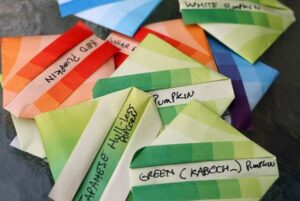Will Spring Still be Sprung? 5 Tips on Saving Garden Seeds

If you save your seeds from the vegetables you grow in your garden, you can often have a seed surplus. This leads to extra seeds for years to come. But are those seeds still viable after years of storage? The bottom line is…maybe. Whether seeds are still viable depends on the type of seed and how it was stored. And, you can only know for sure once you do a germination test on the seeds. Follow these five guidelines on using seeds leftover from last year, or even years ago. Knowing whether your seeds are viable before you plant them in your garden can save you from a disappointing garden season.
1. Is the seed type viable for the time length it was stored?
Since seed viability varies by type, you’ll want to look up your seeds to determine whether viability is possible. Experts differ on the length of viability for various seeds. But certain seeds last only one to two years, while others last nearly a decade. For example, viability is only possible for a single year for onions. Yet for tomatoes, seeds can remain viable up to 10 years.
2. Are the seeds labeled clearly?
No matter what master plan you have when you package your seeds, clearly label each package. If you don’t know what they are and when you stored them away, you’ll be lost when it comes time to germinate the seeds. You also won’t be able to identify whether the seeds were damaged. Don’t rely on your recognition of the seeds. Label the fruit or vegetable type, its specific variety (e.g. Tomatoes, Roma) and the date you collected the seeds.
3. Are the seeds stored in a cool, dry and dark place?
To remain viable, seeds need to be properly stored in a sealed container. That container should be kept in a cool, dark and dry place. If any light or moisture gets to your seeds, they could begin to germinate or simply rot. When you’re ready to harvest new seeds, make sure you’re saving the right type of seeds. Non-hybrid open-pollinator annuals are easiest to harvest.
4. Do seeds appear unchanged?
When it’s time to sow your seeds, check their appearance. If necessary, search online for pictures of what the seed should look like. If the seed is vastly different from what it should look like (e.g. wrinkly instead of smooth), that may be a sign of decay or germination.
5. In doubt? Test for germination.
Seasonal Wisdom suggests a germination test if you’re still in doubt of the seeds’ viability. Wrap the seeds in layers of damp paper towels or cloths and place them in a bag in a warm place. Check for germination after a few days and then daily for about a week.
Saving seeds from the vegetables and fruits you’ve grown can be the ultimate in frugality and green living. If you follow these tips to check if your seeds are still active, you should be able to keep your veggies and fruits going for years to come.
Follow Kristi on Twitter @VeggieConverter
Image: tterag

